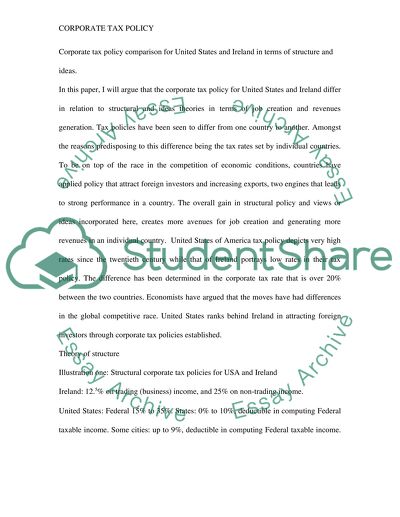Cite this document
(“Corporate Tax Policy comparison between the United States and Ireland: Research Paper”, n.d.)
Retrieved from https://studentshare.org/history/1435751-corporate-tax-policy-comparison-between-the-united
Retrieved from https://studentshare.org/history/1435751-corporate-tax-policy-comparison-between-the-united
(Corporate Tax Policy Comparison Between the United States and Ireland: Research Paper)
https://studentshare.org/history/1435751-corporate-tax-policy-comparison-between-the-united.
https://studentshare.org/history/1435751-corporate-tax-policy-comparison-between-the-united.
“Corporate Tax Policy Comparison Between the United States and Ireland: Research Paper”, n.d. https://studentshare.org/history/1435751-corporate-tax-policy-comparison-between-the-united.


